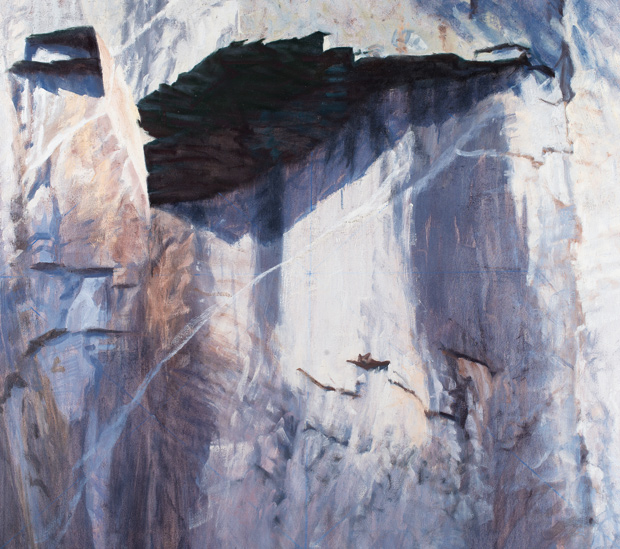Like most ambitious artists, Julian Cooper has been pulled this way and that by seemingly conflicting influences. The son and grandson of Lake District landscape painters — his mother was a sculptor — he fell among abstractionists at his London art college, Goldsmith’s, in the late 1960s. But when I first saw his work in the early 1980s, he had emerged as a flagrant figurative painter, with a series of large canvases depicting scenes from Malcolm Lowry’s novel Under the Volcano. There was no subterfuge about these works; they went straight back to Manet and Degas, not as imitations but developments. Whether from heredity or early practice at his father’s side or hard work, Cooper had the rare skill and conviction to paint realistic people in interiors and landscapes, as if that tradition had never been rubbished by all the subsequent international ‘isms’ of the 20th century.
Then in 1995 he moved on from people to mountains, but not those in the Lake District, where he said the weather was too uncertain to paint en plein air. His true motive was perhaps to keep off family territory. At any rate he travelled to Peru and — siting himself 16,000ft up in the Andes with a huge canvas on a folding easel and a brush as long as his arm — painted four seriously high mountains. The weather may have been reliable but the glacier under his feet was not, so he returned to England with the fourth canvas unfinished. After that he confronted the Alps and the Himalayas, constantly refining his technique and making the finished works mostly in his studio from sketches and photographs on site. More recently he has turned to quarries, the shadowy Gothic ones of Cumbria and the gleaming, smoothly geometrical ones of Carrara.








Comments
Join the debate for just £1 a month
Be part of the conversation with other Spectator readers by getting your first three months for £3.
UNLOCK ACCESS Just £1 a monthAlready a subscriber? Log in